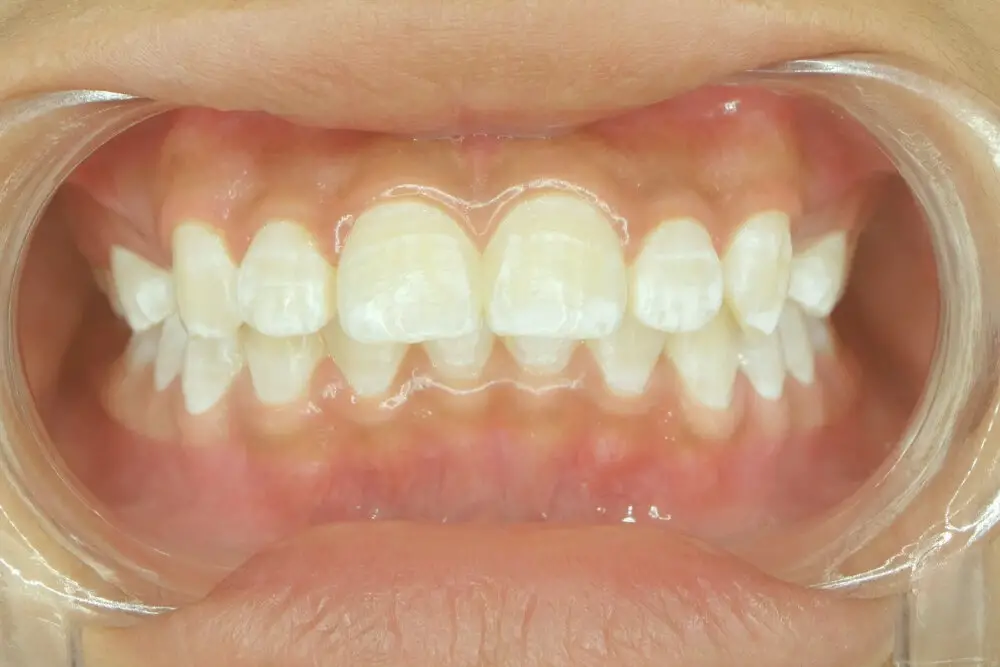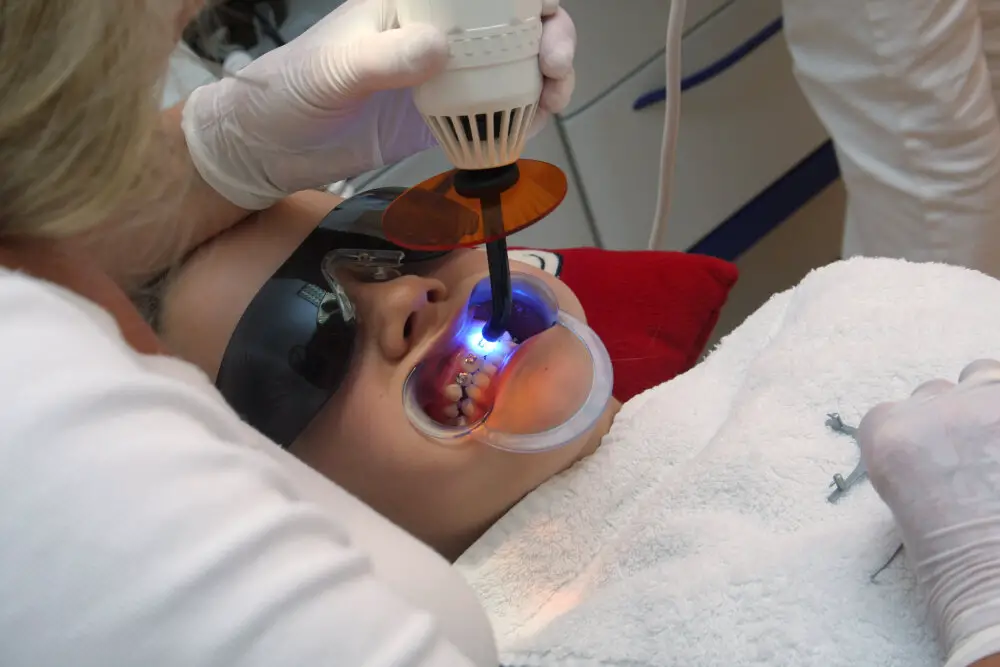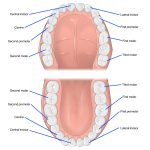Why Dogs Growl and Show Teeth When Petted: Understanding Canine Communication

Dogs are one of the most beloved pets in the world, and for good reason. They are loyal, affectionate, and provide companionship that is hard to come by. However, sometimes their behavior can be confusing, especially when they growl or show their teeth during petting. While this behavior can be alarming, it is important to understand that it is a form of communication. Dogs use body language to express their emotions and intentions, and it is up to us to understand what they are trying to tell us. In this article, we will explore why dogs growl and show teeth when petted, and how we can better understand canine communication. One of the most common reasons that dogs growl or show their teeth when petted is because they are feeling uncomfortable or anxious. Dogs have their own personal space, and if they feel like their boundaries are being violated, they may react defensively. This can be especially true if they are being petted by someone they don’t know well, or if they are feeling stressed or anxious for other reasons. It’s important to pay attention to your dog’s body language in these situations, as they may be trying to tell you that they need some space or time to themselves. By understanding their communication, we can create a safer and more comfortable environment for our furry friends.
Canine communication is a complex and fascinating topic that involves a variety of signals and behaviors. Dogs use a combination of body language, vocalizations, and scent marking to convey their thoughts and feelings to other dogs and humans. Some common forms of canine communication include barking, growling, whining, and wagging their tail. Dogs may also use specific body postures to express dominance, submission, fear, or aggression. Understanding these signals is crucial for building strong relationships with our furry friends and avoiding potentially dangerous situations. By learning to read and interpret canine communication, we can better communicate with our dogs and provide them with the love and care they deserve.
Understanding canine behavior is crucial for dog owners and anyone who interacts with dogs. Dogs rely heavily on body language and vocal cues to communicate their intentions, emotions, and needs. It is important to learn how to interpret these signals to avoid misunderstandings that can lead to aggression or fear. For example, a dog that growls or shows its teeth when petted may not necessarily be aggressive, but rather may be communicating that it is uncomfortable or anxious. By understanding these subtle cues, we can create a safer and more positive environment for our furry friends. Additionally, being knowledgeable about canine behavior can help us identify potential health issues or behavioral problems that may require intervention. Overall, understanding canine behavior can not only enhance our relationship with our dogs but also ensure their well-being and happiness.
Why Dogs Growl

Dogs growl for a variety of reasons, and it is important for dog owners to understand what their pet is communicating. One common reason for growling is fear or anxiety. Dogs may feel threatened by a person or situation and growl as a warning. It is important to approach fearful dogs with caution and allow them to feel safe and secure before attempting to pet or interact with them. Another reason for growling is frustration or discomfort. Dogs may become irritated or uncomfortable when petted in certain areas, such as their paws or ears. In these cases, it is important to respect the dog’s boundaries and avoid petting them in areas that cause discomfort. It is also important to note that growling is not always a negative behavior. Dogs may growl during play as a way to communicate excitement or enjoyment. However, it is important for dog owners to understand the difference between playful growling and aggressive growling. Aggressive growling is typically accompanied by other warning signs, such as bared teeth and stiff body language. In these situations, it is important to remove the dog from the situation and seek the guidance of a professional dog trainer or behaviorist. By understanding why dogs growl and showing respect for their communication, dog owners can build a stronger bond with their pets and create a more positive and harmonious relationship.
Growling in dogs is a vocalization that is often accompanied by body language such as bared teeth, raised hackles, and tense posture. It is a warning signal that typically indicates discomfort or anxiety in response to a perceived threat or aggression. However, it is important to note that not all growling is aggressive in nature, as dogs may also growl during play or when expressing excitement. Understanding the context and body language accompanying the growling can provide insight into the dog’s emotional state and help prevent potential conflicts or misunderstandings between the dog and their human or canine counterparts.
Dogs are known for their loyalty, companionship, and their ability to communicate with humans in many ways. However, sometimes petting a dog can lead to growling and showing teeth, which can be confusing and alarming for their owners. There are many reasons why dogs growl when petted, and it’s important to understand what their body language is trying to convey. For some dogs, growling is a way to communicate that they are uncomfortable or anxious, while for others, it can be a sign of excitement or playfulness. Additionally, some dogs may growl due to past experiences or trauma, or because they are in pain or not feeling well. It’s essential to pay attention to a dog’s body language and vocalizations to understand what they are trying to communicate, and to always approach them with care and respect.
Growling is a common behavior in dogs and can be interpreted in different ways. It is essential to understand that growling is a way of communication for dogs, and it can indicate a range of emotions, including fear, aggression, or playfulness. When a dog growls while being petted, it might be a sign of discomfort or anxiety, and it is crucial to stop petting the dog and give it some space. Sometimes, dogs growl during play to communicate excitement and enthusiasm, and it is usually accompanied by other playful behaviors like wagging their tails and jumping around. It is essential to pay attention to the context of the growling behavior and the body language of the dog to understand what it is trying to communicate.
Why Dogs Show Teeth

Dogs show their teeth for a variety of reasons, and it is important for pet owners to understand their dog’s body language to avoid any miscommunications. One of the most common reasons for a dog showing their teeth is fear or anxiety. When a dog feels threatened or uncomfortable, they may bare their teeth as a warning sign. This can be especially true for dogs who have had negative experiences in the past, such as abuse or neglect. It is important for pet owners to be able to recognize these signs and give their dog space when needed to prevent any aggressive behavior. Another reason for a dog showing their teeth is excitement or playfulness. Dogs are social animals and enjoy interacting with their human and animal companions. When playing, dogs may show their teeth as a sign of excitement, but it is important to distinguish between this behavior and aggressive behavior. Paying attention to other cues, such as tail wagging and relaxed body language, can help pet owners understand their dog’s intentions. It is also important for pet owners to establish boundaries and rules during playtime to avoid any misunderstandings.
Teeth showing in dogs is a natural instinctive behavior that is often associated with aggression and fear. Dogs growl and show their teeth when they feel threatened or uncomfortable, and it is their way of communicating that they are not happy with the situation. The act of baring their teeth is a warning sign to the person or animal they are interacting with, letting them know that they need to back off. Dogs may also show their teeth when they are playing, but this is typically accompanied by other body language such as wagging tails and relaxed body posture. Understanding the meaning behind a dog’s teeth showing can help pet owners and other animal lovers to better communicate with dogs and avoid any potential misunderstandings or dangerous situations.
Dogs are social animals that communicate their emotions and intentions through various body language cues, including facial expressions. When a dog shows teeth while being petted, it is often a sign of discomfort or anxiety rather than aggression. This behavior is usually accompanied by other warning signals, such as growling, stiffening of the body, or avoidance behaviors. Dogs may show their teeth when they feel threatened, scared, or overwhelmed, and it’s important for pet owners to recognize these signs and respond appropriately to prevent any potential conflict or harm. Providing dogs with positive reinforcement, training, and socialization can help them feel more comfortable and confident in different situations, reducing their likelihood to display aggressive behavior.
When interpreting a dog’s teeth showing behavior, it’s important to consider the context and other accompanying body language. A dog may show its teeth as a warning sign, indicating that it’s uncomfortable or feeling threatened. This could be due to a range of factors such as pain, fear, or a lack of socialization. On the other hand, some dogs may show their teeth as a sign of playfulness or excitement, often accompanied by a wagging tail and relaxed body language. Understanding the nuances of a dog’s behavior can help us better communicate with our furry companions and build stronger relationships based on mutual trust and respect.
Understanding Canine Communication

Dogs are wonderful companions, and they communicate in their unique language. Understanding canine communication is essential when it comes to petting them. While petting your dog, it is crucial to look for any signs of discomfort or stress. A dog might show its teeth, growl or even snap when it feels uncomfortable or threatened. These behaviors are a part of their natural communication system and can help you understand their mood and behavior better. Dogs use body language to communicate with their owners and other dogs. They use their ears, eyes, tail, and posture to convey their emotions. For instance, when a dog feels scared or threatened, it might lower its tail, flatten its ears and avoid eye contact. On the contrary, when a dog is happy, it wags its tail, raises its ears, and makes eye contact. When petting your dog, observe its body language, and understand its cues. This way, you can avoid any potential harm and create a secure and loving environment for your furry friend.
Body language is an essential aspect of canine communication, and understanding it can help owners better interpret their dog’s behavior and needs. Dogs use their body language to communicate their emotions, intentions, and desires. For example, a dog may growl or show its teeth when petted as a sign of discomfort or aggression. Other body language signals that dogs use to communicate include their tail position, ear position, and overall posture. By learning to read and interpret their dog’s body language, owners can better understand their dog’s needs and avoid potentially dangerous situations. It is crucial for pet owners to learn and understand canine body language to ensure a harmonious relationship with their furry companions.
Canine communication goes beyond just growling or showing teeth. It’s important for dog owners to be aware of other forms of communication their furry friends use. For example, a wagging tail can indicate excitement or happiness, but the position of the tail can also show fear or aggression. A dog’s body language is also crucial to pay attention to, such as a tense body or raised hackles indicating discomfort or aggression. Additionally, dogs use vocalizations such as barking, whining, and howling to communicate their needs and emotions. By understanding these various forms of communication, dog owners can better interpret their pet’s behavior and respond appropriately to their needs.
Interacting with dogs can be a fun and rewarding experience, but it’s important to understand how to properly approach them to avoid negative behavior. First, always ask the owner for permission before petting a dog. Approaching a dog without permission can be stressful and scary for both the dog and the owner. When petting a dog, avoid direct eye contact and don’t lean over them. Instead, crouch down and let the dog come to you. Pay attention to the dog’s body language, such as wagging tails and relaxed muscles, to ensure they are comfortable. Avoid petting sensitive areas such as the head, tail, and ears, as they may trigger a negative response. Remember to always treat dogs with respect and kindness, and never force them into uncomfortable situations.
Training and Socialization

Training and socialization are essential for dogs to thrive in human society. Training helps dogs understand what behaviors are expected of them, while socialization exposes them to different people, animals, and situations, helping them become well-adjusted and confident. Socialization should begin early in a dog’s life and continue throughout their lifespan. It helps prevent fear and aggression towards unfamiliar people or situations and makes them easier to handle during veterinary visits, grooming, and other activities. Training and socialization also strengthen the bond between dogs and their owners, leading to a happier and healthier relationship. Proper training and socialization require patience, consistency, and positive reinforcement. The use of punishment or physical force can lead to fear, anxiety, and aggression in dogs. Positive reinforcement techniques, such as giving treats and praise, are more effective in shaping a dog’s behavior. Owners should also consider the dog’s individual personality and needs when training and socializing them. Some dogs may require more socialization than others, while some may have a higher drive to learn and perform tasks. With the right training and socialization, dogs can become well-behaved and beloved members of the family.
Training can be a powerful tool for preventing negative behavior in dogs. By teaching dogs appropriate ways to behave, we can help them feel more confident and less reactive in a variety of situations. For example, training can help dogs learn to stay calm and relaxed when being petted, rather than growling or showing their teeth. This can be especially important for dogs who have had negative experiences with humans in the past, as it can help them build trust and feel more comfortable in social situations. Additionally, training can help dogs learn to communicate in more appropriate ways, such as by using body language or vocal cues to express their needs without resorting to aggression or other negative behaviors. Overall, training is an essential part of helping dogs to be happy, healthy, and well-behaved members of society.
Socialization is crucial for dogs as it helps them learn how to interact with other dogs, animals, and humans. It also helps in reducing fear, anxiety, and aggression towards new environments, people, and situations. Socialization is a continuous process that should start at an early age and continue throughout a dog’s life. It involves exposing dogs to various stimuli, such as sounds, smells, textures, and sights. Proper socialization can help dogs develop confidence, improve their communication skills, and reduce the likelihood of developing behavioral issues. Failure to socialize a dog can lead to a lifetime of fear, anxiety, and aggression towards people, other animals, and new environments. Therefore, socialization should be an essential part of every dog’s life.
Socializing a dog properly is essential to prevent aggressive behavior towards humans and other animals. The process should begin as early as possible, ideally between the ages of 3 and 14 weeks. Introduce your dog to a variety of people, including men, women, children, and those of different ethnicities and ages. Expose your dog to different environments, including parks, playgrounds, and busy streets. Additionally, introduce your dog to other animals, such as dogs, cats, and livestock, in a controlled and supervised manner. Use positive reinforcement techniques to reward good behavior and provide plenty of socialization opportunities throughout your dog’s life. Socializing your dog properly will help them become a well-adjusted, happy, and confident companion.
Understanding canine communication is crucial for any dog owner or person who interacts with dogs regularly. Dogs have their own unique language and ways of communicating, and failure to understand these can lead to misinterpretation and potential danger. For example, a dog growling or showing teeth when petted may not necessarily mean aggression, but rather a sign of discomfort or a warning to back off. By understanding canine body language and vocalizations, one can better interpret a dog’s behavior and respond appropriately, ultimately fostering a safer and happier relationship between dogs and humans.
In conclusion, proper interaction with dogs requires a basic understanding of their body language and communication signals. Respect their space and avoid petting them in sensitive areas, such as the head or tail. Allow them to approach you first and always ask the owner’s permission before petting a dog. Keep in mind that growling and showing teeth can be a sign of discomfort or fear, so it’s essential to read their body language and respond accordingly. With patience, respect, and proper communication, you can create a positive and safe relationship with any dog. Remember, dogs are loyal and loving animals that enrich our lives, and it’s our responsibility to treat them with kindness and respect.
Conclusion

In conclusion, understanding canine communication is essential for every dog owner or enthusiast. Dogs growl and show their teeth when petted for various reasons, and it’s important to recognize and respect their body language. Whether it’s due to discomfort, fear, or aggression, it’s crucial to approach dogs with caution and care. Proper training and socialization can also help prevent negative behaviors and promote healthy communication between dogs and humans. Ultimately, by learning about canine communication, we can deepen our bond with our furry companions and ensure their safety and well-being.






